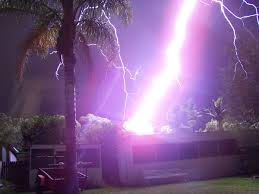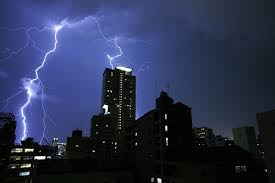
Lightning is an amazing and breathtaking sight to witness. At the same time it is one of the most dangerous and unpredictable of all natural phenomena. But how much do you really know about lightning? Even though scientists all over the world are gathering facts about lightning, dividing it into different types, measuring its voltage, monitoring temperature, and creating it in laboratories, it is still impossible to predict the behavior of every lightning bolt.




Scientists have estimated that throughout the earth 360,000 lightning flashes per hour occur. It is computed by General Electric officials that the average bolt has a voltage of 100 million, a current of 100 thousand amperes, and an energy of four kilowatt hours. Thus, one flash of lightning would keep any house lit for 35 years. And a large bolt of lightning has enough energy to lift the 51,821-ton ocean liner United States six feet into the air.


Let’s look through some facts about lightning :
Every year, the Earth experiences an average of 25 million lightning strikes during some 100,000 thunderstorms. That’s more than a hundred lightning bolts per second.
An average instance of lightning lasts about a quarter of a second and consists of 3-4 strikes.
You can hear thunder from about 12 miles from the starting point.
Lightning bolts travel at speeds of up to 60,000 miles per second.
The average length of a single lightning bolt is 2-3 miles.
A single lightning bolt travels through twisted paths in the air that can be as wide as one of your fingers or between six and ten miles.
The temperature of a typical lightning bolt can reach 50,000 F degrees – that is 5 times greater than the temperature of the surface of the Sun.
The energy contained in a single lightning strike can power a 100 Watt light bulb for 90 days.
“Lightning never strikes twice” unfortunately is a myth. Lightning can strike the same location many times.
Ancient Greeks believed that when a lightning strike hit the sea a new pearl appeared.
Trees sometimes can take direct hits from lightning and not get burnt – the electricity passes over their wet surface and goes straight into the ground.


Moreover, by combining nitrogen and oxygen, lightning creates 100 million tons of plant food a year, raining down far more than is produced by all the commercial fertilizer plants.
 06:08
06:08
 Legender
Legender













0 comments:
Post a Comment